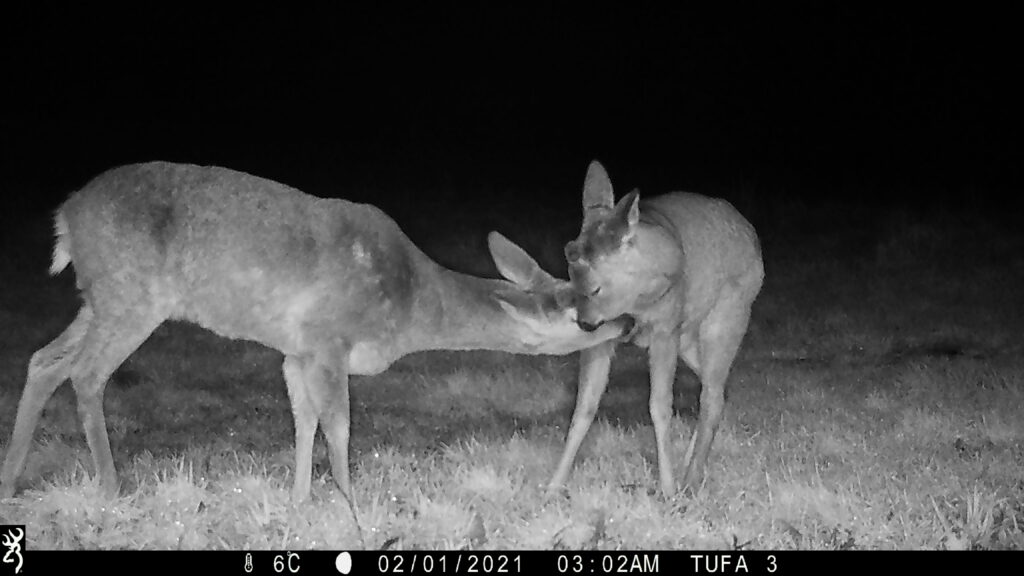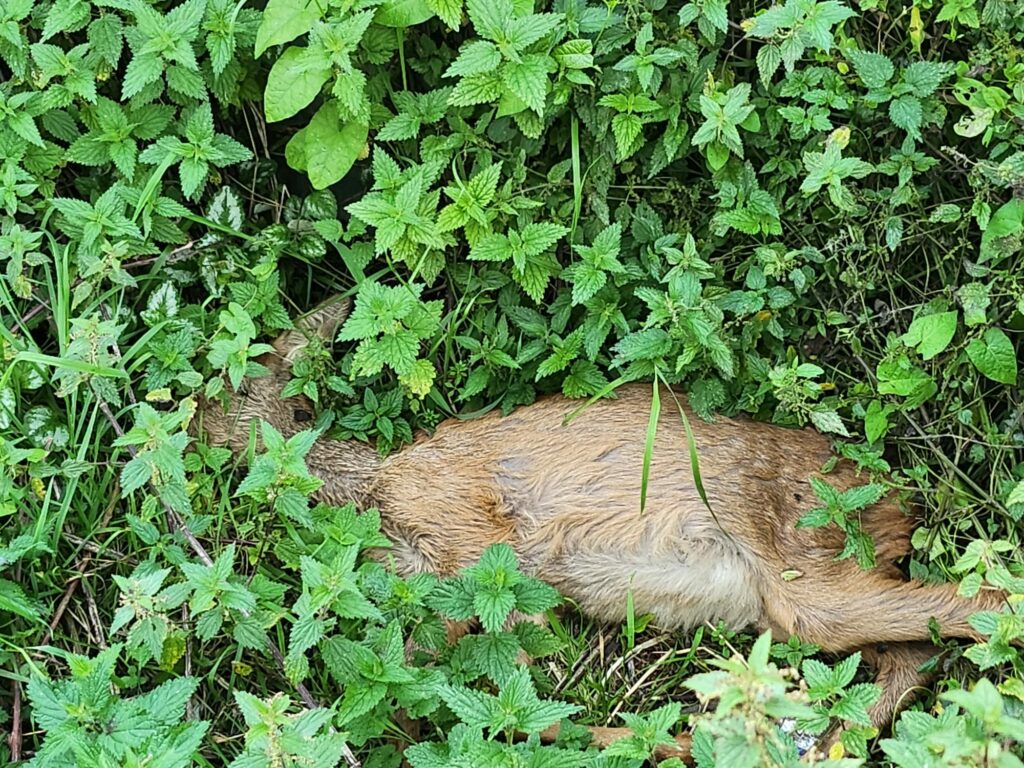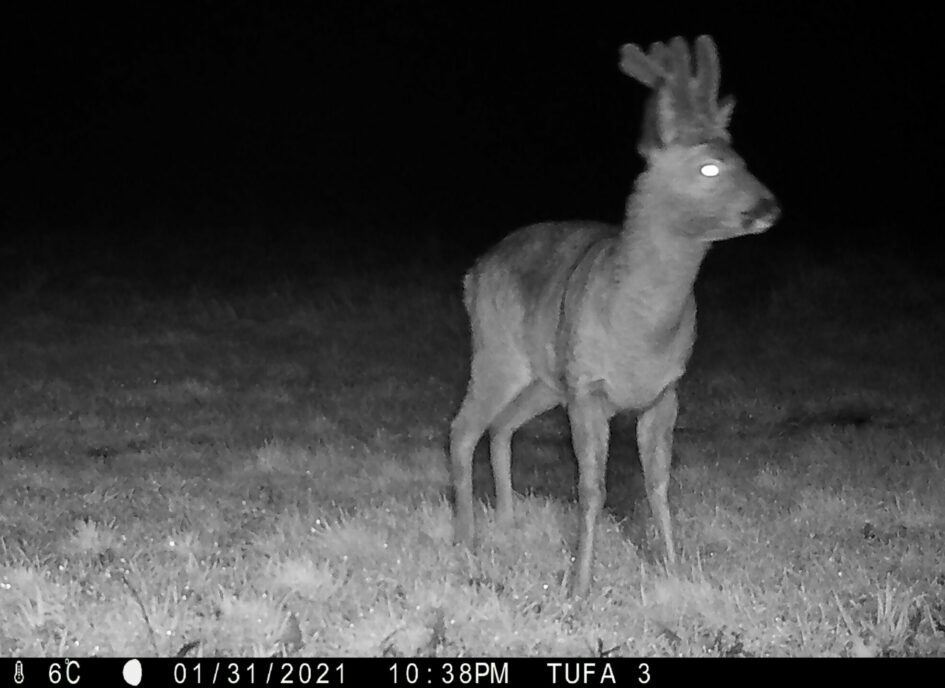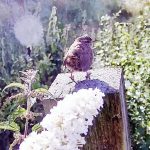Deer are a Marmite choice for many people. Left alone in gardens, they can devastate young plants, especially tulips and daffodils in the spring, and kill young tree saplings by eating their bark. But the counter argument is that Deer are the symbol of a working ecosystem. They startle so easily, that they only frequent open land infrequently, preferring the cover of woodland, and darkness. So when we see them at the Tufa Field do often and in family groups, we know that they regard this site as a safe haven, providing much needed pasture feeding and space to freely run.
And of course they are visually appealing, the phrase ‘Doe-eyes’ does not exist without reason.

Bliss!
tu
We see two species here, the common Fallow Deer and the more elusive and smaller Muntjac, an invasive species originally from China.
The preferred habitat of the Fallow Deer is woodland with pasture clearings, exactly the conditions at the Tufa Field. They are naturally nocturnal, but can be seen on our cameras around dawn and dusk. At night, they can frequently be heard barking, the males being particularly noisy in Autumn during the rut.
Fawns are born in the following summer, and this can be a hazardous time. In the summer of 2023, while work was going on in the field, a young fawn, probably too scared to move, died of heat exhaustion.

For those that survive, the Tufa Field provides year-round sustenance. In winter especially, the distinctive spotted coats of these Fallow deer are evident.
And in Spring, it’s difficult to believe that these Red Fox Cubs and Fallow Deer are not simply filled with the joy of being.









 Total views : 89374
Total views : 89374

Leave a Reply